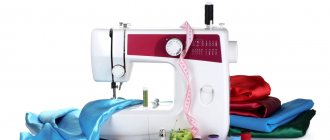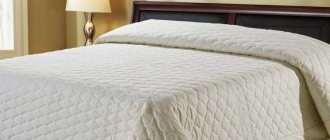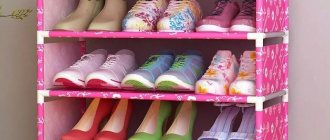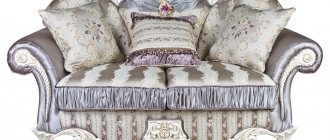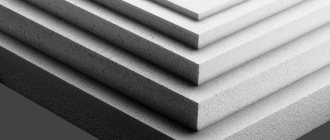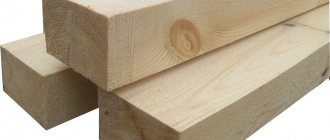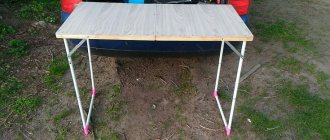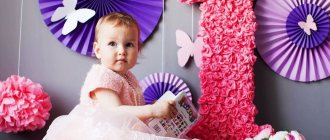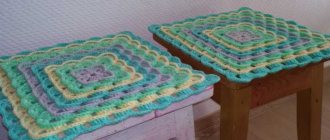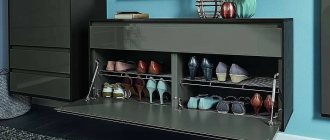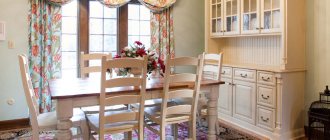Which tablecloth is better to choose for the kitchen?
There is nothing better than textiles to quickly and easily transform your kitchen.
Moreover, you can select both ready-made options and just fabric in order to sew “clothes” for the room with your own hands. Today we will talk about how to choose a tablecloth for the kitchen table.
It would seem that there is nothing complicated about this, but in reality it turns out that many make mistakes by rushing into a purchase. This is especially true for orders via the Internet, when there is no opportunity to “touch” the product.
We sew the tablecloth ourselves
Having understood all the intricacies of choosing the right fabrics and shapes for tablecloths, it is not difficult to make with your own hands a whole set of a wide variety of models for table decoration. Here you can accurately guess the dimensions and bring original ideas to life.
Sewing involves the following order of work:
- Measure the tabletop and the length of the hanging draperies of the tablecloth.
- Make a pattern according to the dimensions obtained, leaving 2.5 cm on each side for hemming the edges.
- Sew individual panels together or simply overcast the edges of the tablecloth.
- Decorate with embroidery, lace or leave as is.
If the table is large, and you will have to sew a tablecloth for it yourself from several panels, try to keep the seams out of sight. Although this kind of cutting is not the most rational, it is better to put a whole piece of material in the center and stitch the missing parts on the sides.
What mistakes should you avoid before purchasing?
The first thing we will voice in this article is possible mistakes. But then we’ll talk about what you should focus on when choosing this decorative element.
1. Be sure to take into account that the color of the tablecloth should be in harmony with something. If you buy one single tablecloth and its color is not duplicated anywhere else, then it will not look good. If you are already buying it, then be sure to take some matching chair cushions, towels or some other textile items.
2. Choose a tablecloth based solely on its shape. If you have a round table, then you need a round tablecloth. If it's square, it's square. Because a rectangle spread out on a square plane will not look as it should. And even more so on an oval surface. Dangling sharp corners are not that interesting, but rather just sloppy.
3. Do not buy a fabric tablecloth without impregnation for daily use, relying on the neatness of your household and special coasters for plates. If you count on this, then in 99 out of 100% you will be bitterly disappointed and face the prospect of daily laundry. What does the table look like while the tablecloth is splashing around in the washing machine? That's right, naked. Therefore, either take any water-repellent tablecloth for these purposes, for example, made of PVC, Teflon, or buy 2-3 fabric ones at once (and duplicate elements for them). Agree, this is all vanity, therefore, it is better to immediately take a tablecloth specifically designed for every day of use.
4. When choosing a tablecloth for the holidays, pay attention to the composition of the material. Synthetics will not work here, because on holidays the table is often decorated with candles and one slightest spark falling on the table can cause a fire. Don't be tempted by the fact that synthetics are easy to wash - safety comes first. If a small spark hits the linen fabric, it will also die out, leaving no trace on the tablecloth. And there can be no talk of an unexpected fire here.
That's basically all you need to remember. Now let's talk about what parameters to focus on at the time of selection.
Choosing fabric for a tablecloth
Tablecloths are made from a wide variety of materials. Therefore, it is difficult for an ordinary buyer who does not particularly understand fabrics to make the right choice. Let's take a look at the most popular types of fabrics together.
One of the most popular materials is linen. It has been used to make tablecloths since ancient times. Outwardly, it looks expensive, but at the same time it has a very capricious character - it shrinks a lot after washing, wrinkles very easily, but irons extremely poorly. A linen tablecloth is the best textile option for a festive table.
Read Rosettes as a work of art
Natural jacquard fabric is also very popular. It can give the table a luxurious look. But do not forget that she needs decent care.
Cotton is considered a true classic. It is easy to iron, but at the same time it shrinks significantly when washed. Therefore, it is unlikely to be suitable for daily use, but for special occasions it is an ideal option.
There are also mixed fabrics. They contain two types of fibers: natural and synthetic. They are incredibly practical: easy to wash, do not shrink and iron well. In addition, their appearance always remains at its best.
Incredibly practical tablecloths made of polyester. They are easy to care for, do not wrinkle, and do not need ironing. And any stains can be easily removed from the surface without much effort.
PVC tablecloths are quite suitable for everyday use. They can be either woven or non-woven. Of course, they are not as soft as fabric tablecloths, but they are incredibly practical. After all, they don't need to be washed. All you need to do is wipe this tablecloth with a damp sponge as needed.
Recently, Teflon coating on tablecloths has become popular. With this type of tablecloth, you may be afraid to put a hot pan on the table. In addition, it will not absorb or allow moisture to pass through.
Decide for what purpose you need a tablecloth
As we already wrote above, if you need an everyday tablecloth for the table, then it is better not to invent it and take only one with Teflon impregnation. These tablecloths come in many colors, so there shouldn’t be any problems. If you just can’t find exactly the tone you need, then you can do it simpler: buy a white and neutral Teflon tablecloth, and put a couple of runners of the desired color on top of it (these are long, narrow panels that are placed across the table).
In this case, your design will come out beautiful and you can sit down to dinner without worrying that someone will stain the tablecloth with sauce or something else.
If you are looking for a holiday tablecloth, then in addition to fire safety, keep the material in mind. Linen is an expensive option, but it is not always justified from a practical point of view, since it is quite difficult to smooth it out after washing. And, if we are talking about a huge tablecloth for a banquet table... Oh, ironing in this case will give you many “unforgettable” minutes (we were modest with the minutes, of course).
It is better to take ordinary, thick cotton fabric. It is easy to iron and dries faster.
There are also silk tablecloths for the holiday. It’s beautiful, expensive, unusual, but touching such a tablecloth with your bare hands is not very pleasant. And the plates will remain unstable on such a surface and there is a high probability of “fighting”. And this is not only a loss, but also an embarrassment for the guests...
So, if you are interested in our opinion, then, definitely, only cotton. Fortunately, the choice of colors is now simply huge. And, if you don’t find what you need, you can always buy a piece of fabric and sew the tablecloth yourself (or give it to a seamstress).
Take the measurements from the table and build on them
How to choose the size of a tablecloth so that it looks perfect? You need to choose one so that the edges of its overhang are at least 20 centimeters. That is, if you have a square table one meter by one meter, then the tablecloth should be exactly 1.20 by 1.20. This is the most optimal length, but it can vary by plus or minus a couple of centimeters. Not more! Otherwise it will either be too long or too short.
But, this is the best size for everyday wear. If you are choosing a festive tablecloth, then you can, and should, take a longer overhang.
Floor-length tablecloths look great, and they also look very good with an overhang of 40-45 centimeters. Moreover, textiles for the holiday can be with flounces and lace. And the longer the free part, the more luxurious the table will look.
Choosing the shape of the tablecloth
So, what shape should you choose for a tablecloth? Everything here is extremely simple - the shape of the tablecloth depends on the shape of the tabletop. If you have a square table, then a tablecloth of a similar shape will suit you, and the same is true with a rectangular table.
But the round table gives more freedom of choice. You can purchase both a round and square tablecloth. Combinations of two tablecloths look especially beautiful on round tables. You can place a round one on the bottom and a smaller square one on top. It will be great if the two tablecloths have contrasting colors.
Read Baker: handmade, rustic style
For an oval table, you can choose an oval and rectangular tablecloth. By the way, a tablecloth cover can be an excellent option for any table. It is made to order. Well, if you like to sew yourself, then you can easily try to sew it yourself. To do this, you need to cut a base from fabric to the size of the tabletop, and sew a skirt to it. For rectangular and square tables, a straight skirt with pintucks at the corners is suitable. But on oval and round tabletops, hanging edges with folds look incredibly beautiful.
Based on the overall style of your kitchen
Basically, tablecloths are now on sale that fit perfectly into “Provence” type interiors. That is, these are all kinds of checks, stripes, polka dots, ruffles... It is very beautiful and cozy, without a doubt. But, if your furniture is in the style of minimalism or hi-tech, then what kind of stripes with ruffles can we talk about?
Such a tablecloth will look extremely inappropriate and, instead of adding chic, it will simply be annoying.
What else would I like to say: our job was to advise and warn, but you still know better which tablecloth is best for your kitchen.
Pay attention to the drying speed of the material
Of course, there is no equal to synthetics in this parameter. And, in principle, a synthetic tablecloth is a completely acceptable option for daily use.
Washing such a tablecloth is a pleasure. And stains don’t eat into it that way and it dries in a matter of hours.
But for festive tablecloths this parameter is absolutely unimportant. Let it dry for at least three days, holidays don’t happen every day.
Fabric for tablecloths. What fabric is required?
What better way to decorate a table and give it a festive look than a tablecloth? It’s also great if it’s a tablecloth that preserves the warmth of the soul and joyful feelings from creating a beautiful thing with your own hands. Here the question may arise from which fabric is best to make a tablecloth. This is what will be discussed in this article.
For a tablecloth, a dense and fairly heavy fabric that holds its shape well and does not slip on the table is well suited. Typically tablecloths are made from natural fabrics such as cotton and linen. When choosing the color and pattern of a TABLECLOTH, you should pay attention to its purpose. For example, a red and green fabric would be suitable for a New Year’s tablecloth; a white fabric would be suitable for an everyday tablecloth. Selecting fabric for a tablecloth is a creative activity that allows you to fully express your imagination.
You can sew a tablecloth from a single piece of fabric, or you can combine it. For example, the main cloth covers the tabletop, and the other part of the tablecloth hangs from the table. The tablecloth can also be decorated with embroidery, appliqués, DECORATIVE FABRICS, BRAND, LACE. You also need to select threads. They must be durable and match the color of the fabric.
The size of the fabric for the tablecloth is chosen so that it hangs equally from the table on all sides. The overhang length is defined as the difference between the width of the fabric and the width of the table, divided by two. Then the length of the fabric is determined as the length of the table plus twice the length of the table overhang. Example, a table measures 160 cm by 70 cm, and the width of the fabric is 150 cm, then the overhang (150-70): 2 = 40 cm. The length of the fabric is 160+40x2=240 cm.
Napkins will be a good addition to the tablecloth. They usually have dimensions of 40x40 or 32x32, but can be in other sizes. The main thing is that they are square. Napkins can be made from the remaining piece of fabric for the tablecloth, or you can choose the fabric so that it matches the color and pattern of the tablecloth. How to make a signature embroidered corner of a napkin from a piece of linen and an example of sewing can be found in this ARTICLE .
A table top or table runner (in the pictures below) will look chic and practical on a tablecloth. A naperon is literally a small tablecloth used to cover the main tablecloth.
Choosing a tablecloth depending on the setting
When choosing a tablecloth, you need to take into account not only your wishes, but also the general atmosphere of the room, its color scheme, and the shape of the table. To make lunch desirable and tasty, you need to consider:
- Room. In order for the product to look harmonious in the interior, you first need to decide in which room it will be located. If this is a table in the living room, then you can take a slightly frilly fabric, with a little pomp - it will speak about the good taste of the owners of the house. If this is a formal room, then it is better not to save money, but to take an expensive, high-quality tablecloth. For example, matte satin with lace around the edge, satin stitch embroidery or hemstitch would look good. The most important thing is that the color is in harmony with the entire interior. For the kitchen, a tablecloth should be as practical as possible, not be afraid of washing, not absorb water and in no case slip.
You might be interested in What are non-flammable and fire-resistant fabrics
Front room
- Colors in the interior. It is very important that the overall picture of the room is harmonious, and this can only be achieved with a well-chosen color. White color is always a win-win option, suitable for any room. If calm tones predominate in the room, then you need to choose one of them and, based on it, choose a plain fabric (for example, in a beige-yellow room there should be some shade of either beige or yellow; in a blue solution, a tablecloth of steel, gray or of blue color). If the whole room is in bright colors, then it is better to choose a calmer neutral color, a not flashy checkered one will do. The kitchen is the place where fabrics with bright prints, linen, images of fruits, vegetables, etc. are suitable.
Kitchen
- Table dimensions. When choosing a fabric tablecloth for a table in the interior, it is also important to take into account the shape and size of the table. They come in round, oval, square and rectangular. You need to take the measurements correctly, you need to measure one cut in a square table, length and width in a rectangular table, diameter in a round table, and both sides in an oval table. 40 cm is added to the resulting size. This is done because, according to the rules of table etiquette, the tablecloth should hang slightly, but in no case be shorter than the table itself. You should take a little more stock if the product has lace, fringe or ruffles.
Large wide table
What fabric is suitable for sewing tablecloths?
Many people do not think about the need for tablecloths in the house until these products are actually needed. Events such as weddings, parties and family dinners are the perfect opportunity to dress up the table at home. Tablecloths add variety not only to the table, but also to the atmosphere and occasion for which they are used. The main function of a tablecloth is to cover and protect the table from damage. An additional function of a tablecloth is to add color and texture to the kitchen, dining room, patio and/or other living space.
Tablecloths are made from various types of materials, including cotton, vinyl, linen and silk. The type of material used and the type of tablecloth for the table will mainly be determined by the occasion for which the tablecloth will be used. Some tablecloths are best suited for certain events and in certain places. However, each type of tablecloth has its own advantages and disadvantages.
Tablecloth fabric: linen
There is hardly any other fabric that adds a special look along with elegance to a family dinner than linen (we're not talking about formal dinners and events here). As far as you know, this is a traditional fiber that has the main unappreciated feature of durability along with a rich appearance that is characterized by the crisp texture of the material. In addition, linen today comes in a wide variety of colors and shades.
Linen is relatively easy to care for as it resists dirt and stains. With a little care from you, your linen tablecloths will continue to serve you for a long time. More importantly, they can be passed down from generation to generation and you can live happily with them in your home for many years to come.
Currently, linen is an affordable luxury for any housewife. This type of fiber will serve all homeowners, regardless of their gender or age.
Tablecloth fabric: cotton
Woven cotton tablecloth is one of the most popular types of tablecloth material. For those who use tablecloths frequently and to protect the table from daily wear and tear, cotton is ideal. It is also the most commonly used. Cotton is used mainly for informal occasions. The material is easy to make, which allows you to keep the cost of the tablecloth relatively inexpensive.
Most cotton tablecloths can be washed or soaked in warm water to clean them. Cotton tablecloths can be used for outdoor dining. Cotton tablecloths work best in the kitchen, dining or outdoor areas.
There is no better fabric for the kitchen than cotton. However, cotton fabrics are not as durable.
Cotton tablecloths are easy to care for and are available in a wide range of colors, patterns and sizes, which is also the reason for their popularity. Mixing with other fabrics causes cotton to lose some of its breathability, making the fabric a little stiffer to the touch. Seven cotton and polyester has better wrinkle resistance. Thicker and laminated cottons are stain resistant. If we talk about wear resistance, then this option is seriously inferior compared to flax.
Materials for making a tablecloth
You should always pay special attention to the material from which the tablecloth is made. It can be natural, synthetic or mixed. Each option has its own properties based on which you need to make a choice.
Cotton tablecloths
One of the most common options, which are often used both at home as a festive tablecloth and in restaurants. The most significant property of this fabric is its ability to quickly absorb moisture, but it is precisely because of this that their service life is usually noticeably reduced.
Cotton product
Various types of fabrics are made from cotton, description:
- percale, which is made from twisted threads and is particularly wear-resistant;
- satin - a rich, shiny fabric that looks like satin, used in good establishments;
- calico is one of the most budget-friendly fabrics, valued for its ease of care and maximum practicality; it is calico that is most often used at home.
Important! Any dirt that gets on the cotton fabric is quickly absorbed and does not allow it to be smeared all over the table. Such tablecloths are easy to iron, but there is a significant drawback - some of them may shrink after washing.
You may be interested in this: Tips for choosing beautiful tulle for the hall
Mati
This is a new material on the market, but at the same time it has already become popular with many due to the technology used to produce it. Mati is about 60% cotton and the rest is polyester. Due to this, the product is durable and wear-resistant.
Mati
The fabric can have different textures and different fibers in its composition (for example, matte, glossy). Mati is treated with an oil-repellent, safe agent. Thanks to this, any contamination can be quickly removed with a napkin and no traces will remain. If the dirt has already dried, an ordinary damp sponge can solve the problem.
Mother has a minus - she is afraid of fire. Therefore, it is better not to take such material into establishments where smoking is allowed.
Zhuravinka
Crane fabric owes its origin to Belarus. It has gained popularity all over the world due to the competent combination of natural cotton fibers and polyesters. It is good for both home and catering establishments.
At the production stage, the fabric has about 40 options of different textures. The crane is treated with substances that repel dirt and grease well and absorb excess odors.
Additional Information! Crane fabric for tablecloths requires delicate care, without using bleach or other aggressive substances.
Tablecloth "Crane"
Fabric for sewing tablecloths: polyester
Polyester is a chemically produced fiber, a synthesized material that can be combined with other fabrics, such as cotton, to create a polyester blend. With polyester it is easy to imitate linen weaves, different textures, and all this at a much lower price. Unfortunately, there is no need to talk about environmentally friendly fabrics here. Polyester is also available in a wide range of colors and patterns just like cotton. This type of fabric is easy to dye.
Polyester is similar to cotton and has many of the same benefits. The only difference is that polyester has more shine and silkiness. It can be used for formal occasions and does not cost much more than cotton. The biggest drawback is the chemicals used to produce polyester. Some people are allergic to polyester, so this can be a huge problem. Polyester tablecloths look best in the kitchen, dining room or outdoor space.
TOP fabrics used in making tablecloths
The most commonly used cotton fabric for tablecloths is percale, which has sufficient strength and wear resistance.
Oval linen tablecloth with a pattern embroidered with ribbons
Depending on the calculated budget and the purpose of the element itself (everyday, festive), the fabrics for the tablecloth can be made of natural, synthetic or mixed fiber. The list of materials in greatest demand and their qualities are given in the table.
Fabric Features Benefits Cotton Natural fabric with excellent absorbent properties. There are several types: calico, percale, satin. Due to the rapid absorption of moisture, the fabric is ideal for napkins. Easy to wash and iron. Durability and versatility. Low cost. Linen Expensive natural material. Quite capricious to use (easily wrinkled, difficult to iron). Durable, environmentally friendly, retains the brightness of colors for a long time. Easy.
An excellent option for festive elements. Crane The fabric combines cotton and polyester fibers. Additionally, it is treated with special mixtures that prevent dirt and grease from penetrating into the fibers. Durable material, perfect for everyday use.
Models with satin and satin fibers interwoven will suitably accompany a festive banquet.MatiSemi-synthetic material. Most of it is cotton, the other half is polyester. It is treated with compounds that repel oils. Many colors and durability allow the fabric to be used for everyday and festive purposes. Easy to clean from minor dirt. Durable.
Snow-white tablecloth made of crane fabric with a beautiful weaving pattern
Tablecloth brown with gold from mati fabric
Teflon mixtures are also used to treat fabrics for tablecloths. Their quality makes the material waterproof and also insensitive to sunlight.
Teflon tablecloths are comfortable and practical to use
Tablecloths made of non-woven materials: vinyl
Vinyl works best outdoors, at picnics and other outdoor events. Vinyl tablecloths also work well in rain and are easy to clean if stains occur. The biggest advantage is that vinyl has great resistance against weather, stains and sun. The biggest downside is that vinyl doesn't work for formal events. This is a fairly cheap material and will look cheap at formal events.
Silk tablecloth
Silk is definitely the best option for formal occasions - weddings, weddings and other special occasions. Of course, silk is the most expensive tablecloth material, but it provides a luxurious look that works best when you are trying to impress others. Silk tablecloths come in a variety of styles, and many come with special embroidery for certain occasions. The main disadvantage is the delicacy of the tablecloth. Care must be taken when washing and caring for silk tablecloths. Silk tablecloths work best in the living room and dining room.
Consider all of these fabric options when trying to find a tablecloth for your home. Be guided by the occasion for which you need the tablecloth, but do not forget about appearance and functionality.
Tablecloth Fabric for Restaurants
If we talk about the product as a whole, then the criteria for its selection do not differ much from the general rules, but you need to take into account that it is better to choose increased strength, because In restaurants, tablecloths are washed almost every day. The appearance and quality of the fabric must fully correspond to the level of the establishment. That is, an expensive and good restaurant should under no circumstances skimp on this attribute.
Tablecloth for restaurant
You should also take into account some features for public catering establishments:
- presentable appearance - it should be either the simplest high-quality fabrics in a room with an interesting design, or textured fabrics in modest rooms;
- ease of care - stains cannot be instantly eaten into the fabric; a tablecloth that respects itself cannot be put back on the table by a self-respecting establishment, and if you buy new tablecloths after each banquet, this will cost you a lot of money, so you need all stains to be easily removed ;
- large sizes - the table should not be exposed even a millimeter, it will look bad, long tablecloths with drapery will be a big advantage;
- wear resistance - the tablecloth should not leave marks from mechanical damage during fun.
- manufacturer, you should focus on popular brands with excellent reviews. Many companies can be written about on the Internet; it is better to get to know the manufacturers in person.
You might be interested in: We sew a blanket from sheep, merino or yak wool yourself
Original interior
Note! For any establishment, it is very important to choose a good fabric for tablecloths for restaurants, which will effectively highlight the interior so that guests will enjoy being there.
Most often, establishments use natural fabrics such as cotton or linen, but they have a drawback - they are difficult to care for. They regularly need to be ironed, soaked and starched to prevent the material from being shot. To make work easier, many people choose fabrics with a small admixture of synthetics. In addition to the fact that they will not wrinkle, they also dry quickly. The main thing is that the fabric does not shine from an excess of polyester in it.
For cafes, fabrics impregnated with a tablecloth coating are very popular, which will increase the wear resistance of the product. As a rule, these are polyethylene or Teflon products. But large restaurants cannot afford them because they look cheap and unpresentable.
Woven tablecloth for cafe
The calling card of any good establishment is chic, high-quality tablecloths.
Fabrics for sewing tablecloths
The choice of material directly depends on the style of the future product.
There are 3 types of tablecloths.
- Everyday : they are practical and have a slight overhang, designed to successfully highlight the interior of the kitchen space.
- Festive: elegant or themed products that have a long overhang and have a special color suitable for the festive mood.
- Tea or guest rooms : an interior item that is very useful for a small feast with friends and family.
Important! The choice of fabric directly depends on the purpose of using the product. More expensive fabrics are used for holiday accessories. Practical, dense fabrics are well suited for everyday decoration.
What kind of fabric for the tablecloth will we need?
When choosing a material, be sure to decide on the use of the tablecloth. If this is a product for every day, then pay attention to fabrics that can easily be washed, dried and ironed, and quickly absorb moisture (synthetic). For a festive tablecloth, you can choose a more expensive natural or combined material with an original pattern and, of course, experiment with the design.
- Cotton is the best option for both everyday tablecloths and decorative items. The practical material is easy to wash and iron, if necessary, it quickly absorbs the fabric and can be not only plain, but also openwork. When purchasing cotton, you need to take into account the shrinkage that will occur after washing - that is why purchase fabric a few centimeters more than necessary;
- silk is a very beautiful fabric that will decorate any interior. The material is expensive and difficult to care for, so it is not suitable as a tablecloth for every day. Both plain silk and decorated with lace look good - the original shine and softness are living proof of this;
- linen is a practical material that can be raw and printed/dyed and with various decorations in the form of lace. These tablecloths are durable, although you need to take into account the first shrinkage after washing. If a stain appears, it is better to take the product to dry cleaning - there is a high risk of spoiling the material;
- Teflon fabric for tablecloths is a new product in the field of serving, which, thanks to its water-repellent impregnation, has received recognition from many housewives. The tablecloth can vary in base material, color, and decoration, but it always pleases with its impeccable appearance. Washable by hand with water temperature no higher than 40 degrees, and ironing is not necessary at all. Like any other natural material, shrinkage is possible after washing, which should be taken into account when purchasing fabric;
- polyester - this material is synthetic, shows excellent wear resistance and guarantees a long service life. This tablecloth will not lose its original shape, although it is highly flammable and is not always suitable for the kitchen. It is often used in combination with cotton, since this composition takes the best of two materials: durability and practicality - what is necessary for the kitchen.
How to choose the right color for a tablecloth
As a rule, a tablecloth should perform not only a practical function, but also a decorative one. That is why it is important to choose the right color for it. It should be combined not only with the overall color scheme of your kitchen, but also with the dishes that will be placed on it. It is best to choose some plain tablecloths for dishes with patterns, and vice versa - bright colored tablecloths for plain dishes.
Read How to choose a faucet
Don't forget about the wonderful way - the game of contrasts. You can use two tablecloths of different sizes that are opposite on the color wheel. You can also make your tablecloth a bright accent in your kitchen.
If you are afraid to choose the right color for the tablecloth, choose one color that will be the main color in the curtains, tablecloths, chair covers, napkins, and potholders. Combinations of plain and multi-colored fabrics will look great.
